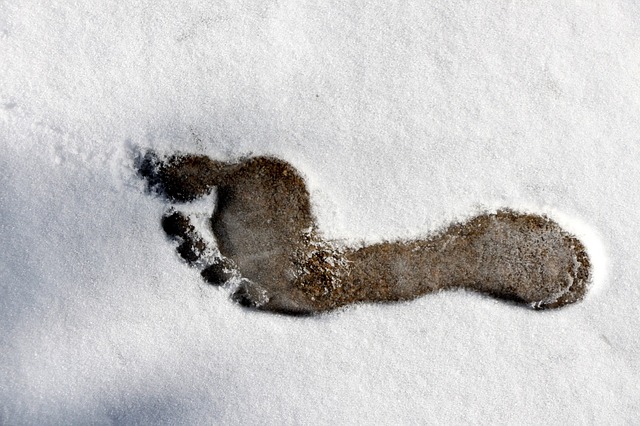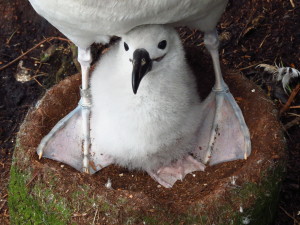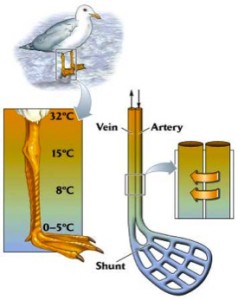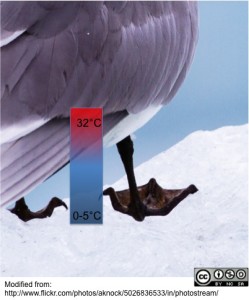Miron, a student on St. Paul Island, asks, “Why don’t kittiwakes get frostbite on their feet if their legs and feet are in the cold water all the time?”
Great question, Miron!
Kittiwakes and other seabirds can walk on ice and paddle or swim in cold waters all without getting frostbite on their feet. They can then use these same feet to warm their eggs! How do they do it?
First of all a bird would have to eat a lot of food to always keep its’ feet at the same temperature as its’ body (105ºF or 41ºC). So, to save energy, seabird’s feet can get very cold. This is OK because there are no vital organs in feet! Feet are basically skin, bone, tendons (connect muscle to bone), ligaments (connect bone to bone), and blood vessels. The muscles that make the feet move are located at the top of the leg close to the body and are insulated under a layer of feathers. Can you see the veins in the picture below of the Grey-footed Albatross’ feet?
Grey-headed Albatross. Photo by Caitlin Kroeger
The next part of the puzzle is that in cold environments (such as in the ocean or when landing on ice) the feet still have to be warmed so that they don’t freeze. Blood is circulated through the feet and a counter current heat exchange works to help cool blood traveling from the body to the feet so that birds don’t loose too much of their precious body heat.
The blood vessels containing blood traveling towards the feet and towards the body run next to each other in the leg. This allows warm blood traveling from the body to the feet to be cooled by cold blood that is traveling from the feet to the body. And, vice versa: cold blood leaving the feet is warmed before returning to the body.
Sometimes birds will also stand on one foot or tuck their feet up under their wings to keep them warm and conserve body heat.
Because bird’s feet aren’t covered by feathers (like the rest of their body) they provide an important way for regulating body temperature. When birds are incubating eggs they are able to keep their feet warm. When it is hot out or when a bird is exercising (flying) they can also dump excess heat though their feet. The ability to loose heat is especially important for seabird species like kittiwakes and murres because they have feathers and a layer of down to keep them warm.
Questions For YOU:
What is your body temperature?
What are vital organs?
Further Reading:
1) Penguins avoiding frost bite
2) Comic Relief




